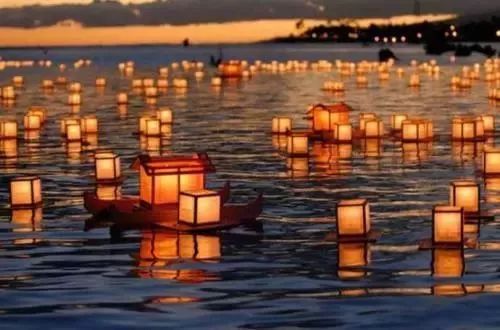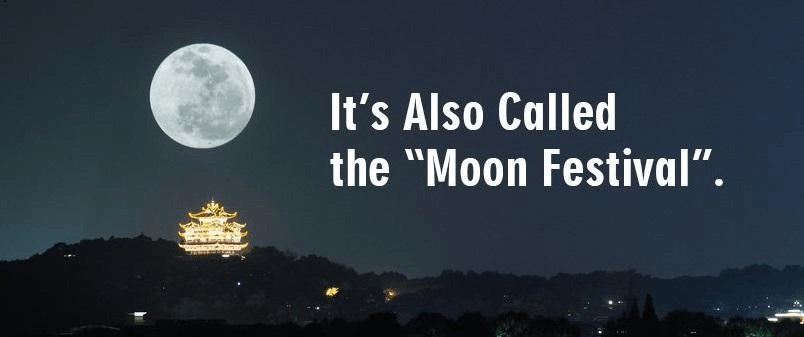HOLIDAY NOTICE
The 15th day of the eighth lunar month is called "Mid-Autumn" because it falls exactly in the middle of autumn. The Mid-Autumn Festival is also known as the "Zhongqiu Festival" or the "Reunion Festival"; it became popular during the Song Dynasty and by the Ming and Qing dynasties, it had become one of the major festivals in China, ranking as the second most important traditional festival after the Spring Festival.
WATCH THE FULL MOON
Throughout history, people have held countless beautiful imaginations about the moon, such as Chang'e, the Jade Rabbit, and the Jade Toad... These reveries about the moon embody a unique romance belonging to the Chinese. They are expressed in Zhang Jiuling's poem as "A bright moon rises over the sea, and at this moment, we share the same sky though far apart," in Bai Juyi's verse as the melancholy of "Looking northwest, where is my hometown? Turning southeast, how many times have I seen the moon full and round?" and in Su Shi's lyrics as the hope that "I wish all people would live long and share the beauty of this moon together, even if separated by thousands of miles."
The full moon symbolizes reunion, and its bright light illuminates the thoughts within our hearts, allowing us to send distant wishes to our friends and family. In the affairs of human emotions, where is there not yearning?
TASTE SEASONAL DELICACIES
During the Mid-Autumn Festival, people savor a variety of seasonal delicacies, sharing this moment of reunion and harmony.
—MOONCAKE—
"The small cakes, like chewing on the moon, contain both crispness and sweetness within" — the round mooncakes encapsulate beautiful wishes, symbolizing abundant harvests and familial harmony.
—OSMANTHUS FLOWERS—
People often eat mooncakes and enjoy the fragrance of osmanthus flowers during the Mid-Autumn Festival, consuming various foods made from osmanthus, with cakes and candies being the most common. On the night of the Mid-Autumn Festival, looking up at the red osmanthus in the moon, smelling the fragrance of osmanthus, and drinking a cup of osmanthus honey wine to celebrate the sweetness and happiness of the family has become a beautiful enjoyment of the festival. In modern times, people mostly substitute red wine for the osmanthus honey wine.
—TARO—

Taro is a delicious seasonal snack, and due to its characteristic of not being eaten by locusts, it has been praised since ancient times as "a vegetable in ordinary times, a staple in famine years." In some places in Guangdong, it is customary to eat taro during the Mid-Autumn Festival. At this time, every household would stew a pot of taro, gathering together as a family, enjoying the beauty of the full moon while savoring the delicious aroma of taro. Eating taro during the Mid-Autumn Festival also carries the meaning of not believing in evil.
ENJOY THE VIEW
—WATCH THE TIDAL BORE—
In ancient times, besides moon gazing during the Mid-Autumn Festival, watching the tidal bore was considered another grand event in the Zhejiang region. The custom of watching the tidal bore during the Mid-Autumn Festival has a long history, with detailed descriptions found in Mei Cheng's "Qi Fa" fu (Rhapsody on the Seven Stimuli) as early as the Han Dynasty. After the Han Dynasty, the trend of watching the tidal bore during the Mid-Autumn Festival became even more popular. Observing the ebb and flow of the tide is akin to tasting the various flavors of life.
—LIGHT LAMPS—

On the night of the Mid-Autumn Festival, there is a custom of lighting lamps to enhance the moonlight. Today, in the Huguang region, there is still a festival custom of stacking tiles to form a tower and lighting lamps on top of it. In the regions south of the Yangtze River, there is a custom of making lantern boats. In modern times, the custom of lighting lamps during the Mid-Autumn Festival has become even more prevalent. In the article "Casual Talk on Seasonal Affairs" by Zhou Yunjin and He Xiangfei, it is said: "Guangdong is where the lighting of lamps is most widespread. Each family, more than ten days before the festival, would use bamboo strips to make lanterns. They would create shapes of fruits, birds, animals, fish, insects, and words like 'Celebrating Mid-Autumn,' covering them with colored paper and painting them in various hues. On the night of the Mid-Autumn Festival, candles would be lit inside the lanterns, which were then tied to bamboo poles with ropes and erected on tiled eaves or terraces, or small lamps would be arranged to form words or various shapes and hung high in the house, commonly known as 'erecting Mid-Autumn' or 'raising Mid-Autumn.' The lamps hung by wealthy families could be several zhang (a traditional Chinese unit of measurement, approximately 3.3 meters) high, and family members would gather underneath to drink and have fun. Ordinary people would set up a flagpole with two lanterns, also enjoying themselves. The whole city, illuminated by lights, was like a world of glass." The scale of the custom of lighting lamps during the Mid-Autumn Festival seems to be second only to the Lantern Festival.
—WORSHIP ANCESTORS—
Customs of the Mid-Autumn Festival in the Chaoshan region of Guangdong. In the afternoon of the Mid-Autumn Festival, each household would set up an altar in the main hall, place the ancestral tablets, and offer various sacrificial items. After the sacrifice, the offerings would be cooked one by one, and the whole family would share a sumptuous dinner together.
—APPRECIATE THE “TU'ER YE”—
Appreciating the "Tu'er Ye" (Rabbit God) is a Mid-Autumn Festival custom popular in northern China, which originated around the late Ming Dynasty. During the Mid-Autumn Festival in "Old Beijing," apart from eating mooncakes, there was also a custom of offering sacrifices to the "Tu'er Ye." The "Tu'er Ye" has a rabbit's head and a human body, wears armor, carries a flag on its back, and can be depicted sitting, standing, pounding with a pestle, or riding an animal, with two large ears standing upright. Initially, the "Tu'er Ye" was used for moon worshipping ceremonies during the Mid-Autumn Festival. By the Qing Dynasty, the "Tu'er Ye" gradually transformed into a toy for children during the Mid-Autumn Festival.
—CELEBRATE FAMILY REUNION—
The custom of family reunion during the Mid-Autumn Festival originated in the Tang Dynasty and flourished in the Song and Ming dynasties. On this day, every household would go out during the daytime and enjoy the full moon at night, celebrating the festival together.
In this fast-paced life and era of accelerated mobility, almost every family has loved ones living, studying, and working away from home; being apart more than together has increasingly become the norm in our lives. Although communication has become more and more advanced, making contact simple and swift, these online exchanges can never replace the gaze of face-to-face interaction. At any time, in any place, among any group of people, reunion is the most beautiful buzzword!
Post time: Sep-14-2024








